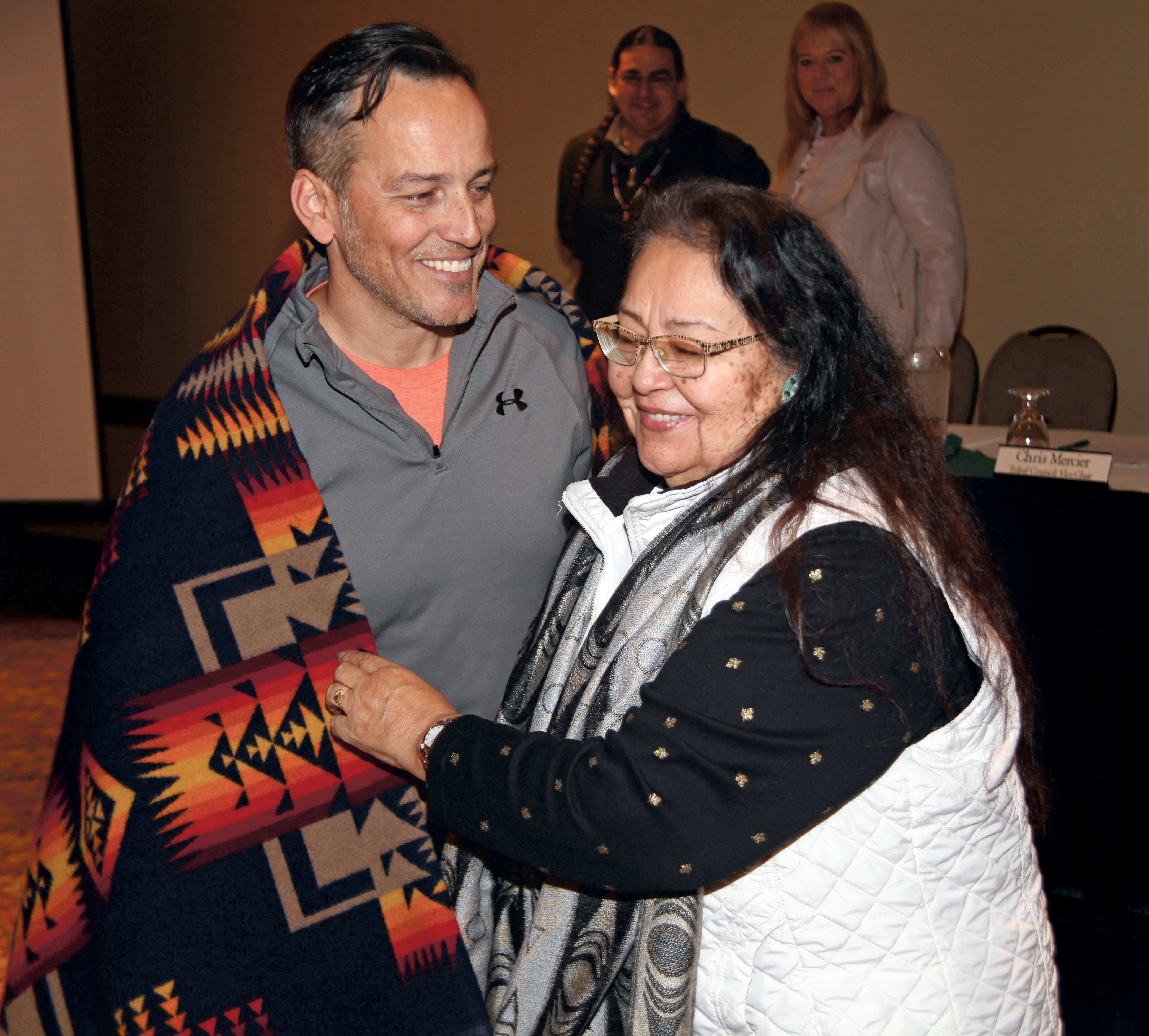Culture
Yesteryears: Feb. 15, 2024

Yesteryears
2019 – Tribal member Bryan Mercier was the first new Bureau of Indian Affairs (BIA) senior regional official in 40 years. Mercier previously worked for the Bonneville Power Administration for 10 years as a fish and wildlife division director. The former Tribal youth crew worker attended University of Oregon, and was awarded a Hatfield Fellowship in 2003, serving as principal legislative staff on federal Indian policy for Oregon Sen. Gordon Smith. He later became a financial advisor for the U.S. Treasury and a program analyst for the Forest Service. “Being the first new regional director in 40 years can be intimidating, but I want to make this area the crown jewel of BIA operations in the country,” Mercier said.
2014 – The Oregon chub, a small floodplain minnow, was the first fish removed from the federal government’s list of endangered species thanks to the success of cooperative efforts to prevent extinction. The Confederated Tribes of Grand Ronde, U.S. Forest Service, U.S. Army Corps of Engineers, U.S. Fish and Wildlife Service, Oregon State Parks, Oregon Department of Transportation, municipalities, private landowners and others participated. Habitats for the Oregon chub – sloughs, swamps, beaver ponds and tributaries – were reduced by the construction of Willamette River flood control dams, river channelization and draining of wetlands for agriculture and development. Non-native game fish, such as bass and bluegill prey on the chub, were listed as endangered in 1993 when less than 1,000 existed. This increased to 150,000 by 2014.
2009 – Sixth-grade Tribal member Matthew Hofenbredl, 12, qualified in the 75-pound class for the USA Wrestling Middle School Dual National Championships in Danville, Ill. During wrestling season, he practiced with the middle school team five days a week and worked out with the Dallas Mat Club twice a week. His father, Tribal member Leland Hofenbredl, attended his tournaments every Saturday. His grandmother, Tribal Elder Priscilla Hofenbredl, shared her pride in her grandson. “He has a whole bunch of medals,” she said. “Ever since he started wrestling, he’s got nothing less than a fourth. Most of the time he was first.”
2004 – Public Works Director John Mercier described the jobs and facilities the department handled day-to-day for the Tribe at the February General Council meeting. There were 27 staff positions, of which 25 were filled by Tribal members. That included four managers, six maintenance technicians, 12 housekeepers, two cemetery caretakers and two seasonal groundskeepers. Those workers were responsible for 39 buildings. Challenges for the department included trying to prevent damage and misuse of property. Illegal dumping, both at the recycling center and on reservation woodlands, were immediate problems for the department.
1999 – The Grand Ronde Tribe’s success drew praise from Bureau of Indian Affairs officials as a potential model for economic development in Indian Country following a presentation by Tribal Council Chairman Mark Mercier. Officials from throughout the Northwest, including Alaska, listened to Mercier outline the Tribe’s journey from its struggle for Restoration and reservation lands to establishing Oregon’s most successful casino. “The Tribe has always been aggressive about working with different federal agencies,” Mercier said.
1994 – Tribal Council Vice Chair Kathryn Harrison was elected to the Native American Rights Fund board of directors. Based in Boulder, Colo., the organization was founded in the 1960s to advocate for the rights of Native Americans. Priorities included preservation of Tribal existence, protection of Tribal natural resources, promotion of human rights, accountability of government to Native Americans and the development of Indian law.
1989 – Tribal Elder Riley Porter, a member of the Tribe’s Hunting and Health committees, was featured in the Honoring our Warriors column. His 13 years of military service spanned World War II and the Korean War. During World War II, Riley served in active duty with the U.S. Navy, stationed on a mine sweeper during the liberation of the Philippines. After World War II, Riley was an instructor in the Coast Guard from 1947-1950. In 1951, he returned to naval duty off the shores of Korea on the USS Rendova, a carrier escort ship, participating in more than 60 rescue missions.
